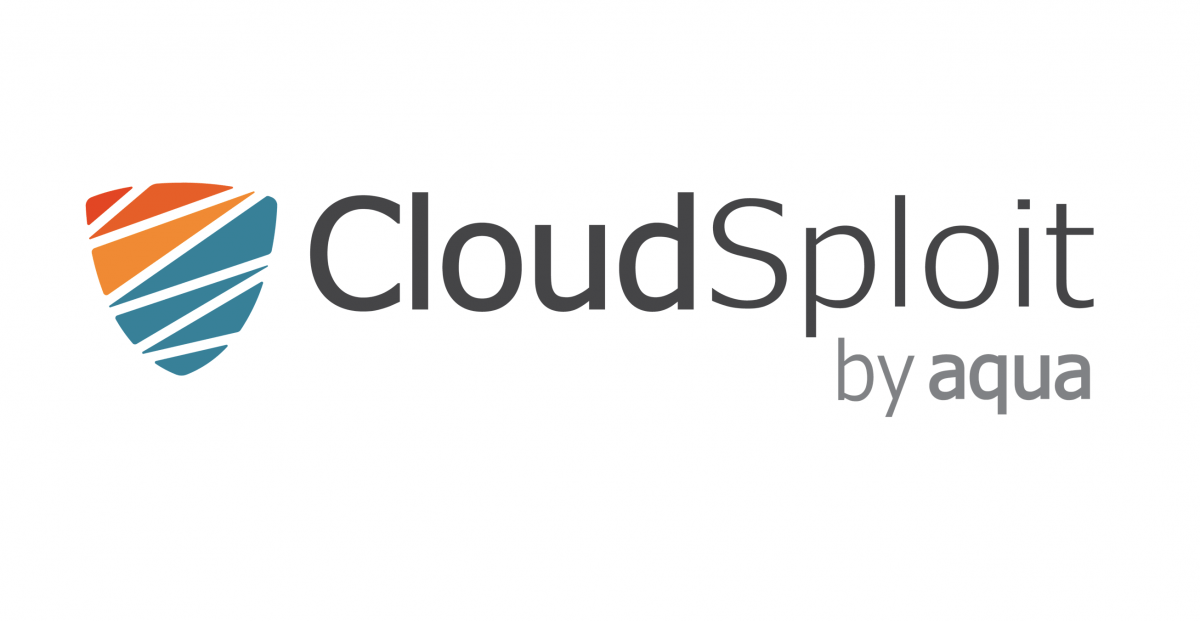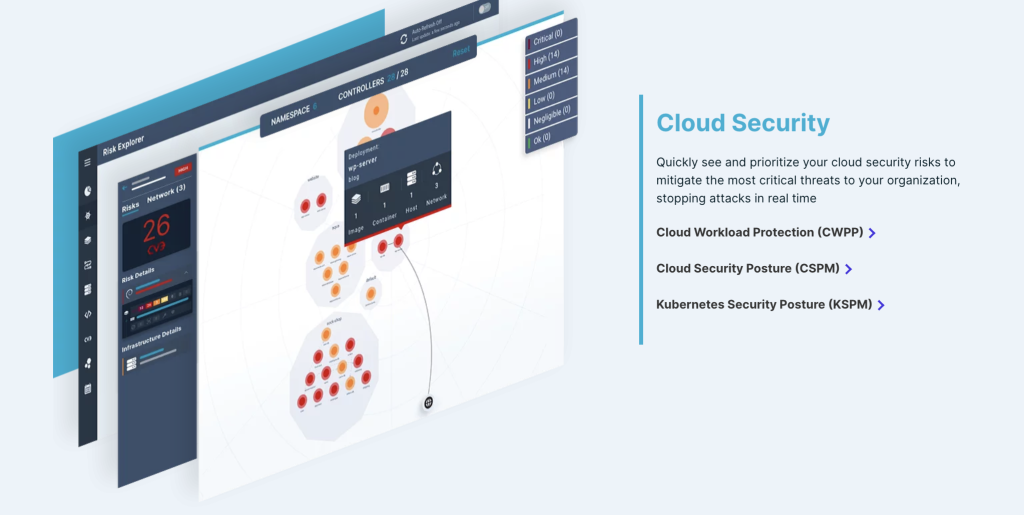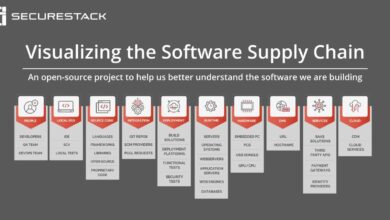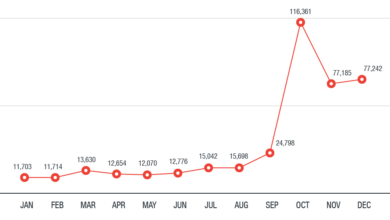
Aqua Security Acquires CloudSploit
Aqua Security acquires CloudSploit – a move that sent ripples through the cloud security landscape! This acquisition isn’t just another merger; it’s a strategic play that significantly alters the competitive dynamics of cloud security. We’ll delve into the reasons behind this deal, exploring the technologies involved, the impact on customers, and what this means for the future of cloud security.
Get ready for a deep dive into this fascinating development.
The cloud security market is fiercely competitive, and Aqua Security’s purchase of CloudSploit represents a significant consolidation of power. This blog post will unpack the strategic rationale, examining the technologies involved, the market implications, and potential future scenarios. We’ll look at how this merger affects both existing CloudSploit and Aqua Security customers and how it reshapes the overall competitive landscape.
Prepare to understand the full impact of this major industry event.
Aqua Security’s Acquisition of CloudSploit: Aqua Security Acquires Cloudsploit

The cloud security market is a rapidly evolving landscape, constantly adapting to new threats and technologies. Aqua Security’s acquisition of CloudSploit, therefore, wasn’t just another merger; it was a strategic move with significant implications for the industry. Understanding the context of this acquisition requires examining the pre-existing competitive landscape and the strategic reasoning behind the deal.
The Pre-Acquisition Cloud Security Landscape
Before the acquisition, the cloud security market was already a crowded space. Numerous vendors offered a variety of solutions, ranging from cloud security posture management (CSPM) tools like CloudSploit to comprehensive cloud workload protection platforms (CWPPs) like Aqua Security. The competition was fierce, with companies differentiating themselves through specialized features, integrations, and target customer segments. Some focused on specific cloud providers (AWS, Azure, GCP), while others aimed for broader compatibility.
This competitive pressure pushed innovation, but also created complexity for customers navigating the myriad of options. Smaller players often struggled to compete with established giants, leading to consolidation, as seen with the Aqua Security/CloudSploit merger.
Strategic Rationale Behind the Acquisition
Aqua Security’s acquisition of CloudSploit was a strategic move designed to strengthen its position in the market and expand its product offerings. By acquiring CloudSploit, Aqua Security gained access to a robust CSPM solution, complementing its existing CWPP capabilities. This combination provided a more comprehensive and integrated security platform for its customers, addressing both cloud infrastructure and workload security concerns.
The acquisition also likely aimed to expand Aqua Security’s customer base, particularly amongst those primarily focused on CSPM solutions. This synergistic combination allowed Aqua Security to offer a more complete solution, reducing customer friction and increasing its market appeal.
Market Share Before the Merger
Precise market share figures for both Aqua Security and CloudSploit before the merger are difficult to obtain publicly. Market research firms often have proprietary data. However, it’s safe to say that Aqua Security was a larger and more established player in the CWPP market, while CloudSploit held a notable, albeit smaller, share in the CSPM segment. CloudSploit’s strength lay in its ease of use and its focus on identifying misconfigurations in cloud environments.
The acquisition allowed Aqua Security to leverage CloudSploit’s technology and expertise to enhance its overall offering and address a broader range of customer needs.
Timeline of Significant Events Leading to the Acquisition
The precise timeline of events leading to the acquisition may not be publicly available in detail. However, we can reconstruct a likely sequence of events. This likely involved periods of due diligence, negotiation, and regulatory approvals. The following table provides a hypothetical timeline based on common acquisition processes:
| Date | Event | Company Involved | Market Impact |
|---|---|---|---|
| Q1 20XX | Initial Contact/Due Diligence | Aqua Security & CloudSploit | Minimal – Internal discussions |
| Q2 20XX | Negotiation of Terms | Aqua Security & CloudSploit | Minimal – Internal discussions |
| Q3 20XX | Acquisition Announced | Aqua Security & CloudSploit | Increased market awareness of both companies; potential shift in customer considerations. |
| Q4 20XX | Acquisition Completed | Aqua Security & CloudSploit | Integration of technologies and teams begins; potential consolidation in the CSPM market. |
CloudSploit’s Technology and Capabilities
CloudSploit’s acquisition by Aqua Security represents a significant boost to Aqua’s cloud security posture management (CSPM) capabilities. CloudSploit brought to the table a unique approach to identifying misconfigurations and vulnerabilities in cloud environments, focusing on a fast, lightweight, and agentless scanning methodology. This contrasts with some more resource-intensive approaches, making it particularly appealing for organizations with complex or rapidly changing cloud infrastructures.CloudSploit’s core technology relied on a combination of static analysis and automated vulnerability scanning.
It leveraged its extensive knowledge base of cloud provider best practices and security standards to identify deviations from these guidelines within customer cloud deployments. This allowed for the rapid detection of vulnerabilities before they could be exploited. The agentless nature of the platform meant minimal disruption to existing systems and a simplified deployment process.
Aqua Security’s acquisition of CloudSploit is big news for cloud security. This move highlights the growing importance of robust security measures, especially as we see rapid advancements in application development. Think about how this impacts the future of development, like what’s discussed in this great article on domino app dev, the low-code and pro-code future , and how it relates to securing those new applications.
Ultimately, Aqua’s acquisition underscores the need for proactive security strategies in today’s increasingly complex cloud environments.
CloudSploit’s Key Features and Functionalities
CloudSploit provided a comprehensive suite of features designed to streamline the cloud security assessment process. Its platform offered automated scans of various cloud providers (AWS, Azure, GCP, etc.), identifying a wide range of misconfigurations and vulnerabilities, including those related to storage, networking, compute, and identity and access management (IAM). The platform also generated detailed reports with remediation guidance, simplifying the process of addressing identified issues.
Beyond simple identification, CloudSploit offered features to prioritize vulnerabilities based on severity and risk, allowing security teams to focus their efforts on the most critical issues first. This prioritization was crucial in managing the often overwhelming volume of security alerts encountered in large cloud environments.
Comparison with Aqua Security’s Existing Offerings
Prior to the acquisition, Aqua Security already offered a robust cloud security platform. However, CloudSploit brought several complementary capabilities. While Aqua’s existing solutions focused on runtime protection and container security, CloudSploit addressed the critical area of cloud infrastructure misconfiguration. This integration filled a gap in Aqua’s offerings, providing a more holistic approach to cloud security. CloudSploit’s agentless approach also provided an alternative scanning method, supplementing Aqua’s existing agent-based solutions, and offering customers flexibility in their security deployments.
Integration with Aqua Security’s Product Portfolio
The integration of CloudSploit’s technology into Aqua Security’s platform has resulted in a more comprehensive and unified cloud security solution. CloudSploit’s vulnerability scanning capabilities now feed directly into Aqua’s broader security posture management and runtime protection features. This allows for a more seamless workflow, where identified misconfigurations are immediately contextualized within the broader security landscape. For example, a misconfigured storage bucket identified by CloudSploit could trigger alerts in Aqua’s runtime protection modules if sensitive data were accessed from that bucket.
This integrated approach offers improved efficiency and enhanced security visibility for Aqua’s customers. The combination of proactive vulnerability identification with runtime protection creates a more robust and comprehensive security posture.
Impact on Customers and the Cloud Security Industry

The acquisition of CloudSploit by Aqua Security presents a complex picture with significant implications for both existing CloudSploit customers and the broader cloud security landscape. While the integration promises enhanced capabilities and a more robust security posture for many, it also introduces potential challenges and uncertainties that need careful consideration. This analysis explores the various facets of this impact.
Benefits for Existing CloudSploit Customers
The primary benefit for existing CloudSploit customers lies in the potential for a significantly improved and more comprehensive cloud security platform. Aqua Security’s broader suite of tools and capabilities, including its container security expertise, offers a substantial upgrade compared to CloudSploit’s standalone functionality. This means access to more advanced features, potentially better threat detection and response mechanisms, and a more unified approach to managing cloud security across various environments.
Furthermore, Aqua Security’s larger resources and support infrastructure should translate to improved customer service and potentially faster resolution of any issues. The integration could also lead to easier and more streamlined workflows, reducing complexity and operational overhead for security teams.
Challenges Faced by CloudSploit Customers Following Integration
While the acquisition promises benefits, there are also potential challenges. The most immediate concern is the integration process itself. Migrating from CloudSploit to the Aqua Security platform could involve significant disruption, requiring reconfiguration of existing security policies and potentially retraining of personnel. Compatibility issues between the two systems are also a possibility, leading to temporary service interruptions or functionality limitations.
Pricing changes are another potential concern, as Aqua Security’s pricing model may differ from CloudSploit’s, potentially increasing costs for some customers. Finally, the loss of certain specialized features or functionalities from CloudSploit, even if replaced by superior alternatives in Aqua Security’s platform, could cause temporary inconvenience.
Impact on the Broader Cloud Security Market
The acquisition signals a consolidation trend within the cloud security market. Larger players are increasingly acquiring smaller, specialized companies to expand their product offerings and strengthen their competitive positions. This can lead to both positive and negative effects. On the positive side, it can foster innovation by combining different technologies and expertise, ultimately benefiting users with more comprehensive security solutions.
However, it can also lead to reduced competition and potentially higher prices, especially if the acquisition results in a dominant player controlling a significant market share. The long-term impact will depend on how effectively Aqua Security integrates CloudSploit’s technology and whether the combined offering remains competitive and innovative.
Hypothetical Scenario: Large Enterprise Customer Impact
Imagine a large financial institution, “Global Bank,” currently using CloudSploit for basic cloud security scanning. Post-acquisition, Global Bank benefits from Aqua Security’s advanced container security features, which are crucial given their increasing reliance on microservices architecture. However, they face challenges during the migration, experiencing temporary downtime during the integration process and needing to retrain their security team on the new platform.
Despite this initial disruption, the long-term benefits outweigh the challenges. Global Bank enjoys a more comprehensive and robust security posture, improved threat detection capabilities, and better integration with their existing security infrastructure. The consolidated platform simplifies their security management, leading to cost savings in the long run despite the initial investment in training and migration.
Financial Implications and Future Outlook
The acquisition of CloudSploit by Aqua Security represents a significant strategic move, the financial details of which haven’t been publicly disclosed in full. However, we can analyze the potential implications based on industry trends and the known capabilities of both companies. The lack of precise financial figures necessitates a more qualitative assessment of the deal’s potential return on investment.The potential return on investment for Aqua Security hinges on several factors.
First, CloudSploit’s technology, specializing in cloud misconfiguration detection, directly complements Aqua’s existing cloud security platform. This synergistic integration should lead to increased market share and potentially higher customer acquisition costs. Second, the acquisition likely expands Aqua’s addressable market, allowing them to tap into new customer segments that prioritize misconfiguration detection as a key security concern. Finally, the streamlined and enhanced security posture offered by the combined platform should result in higher customer retention and increased average revenue per user (ARPU).
A successful integration will translate into a positive ROI, albeit one that will take time to fully materialize and measure.
Aqua Security’s Cloud Security Strategy After the Acquisition
Following the CloudSploit acquisition, Aqua Security is poised to solidify its position as a leading provider of comprehensive cloud-native security solutions. We can anticipate a greater emphasis on automated security and preventative measures, leveraging CloudSploit’s strengths in identifying misconfigurations before they can be exploited. This will likely involve enhancing Aqua’s existing platform with CloudSploit’s detection engine and expanding its capabilities to cover a wider range of cloud environments and services.
The company will probably focus on delivering a more unified and seamless user experience, making it easier for customers to manage and monitor their cloud security posture. This is a common strategy seen in acquisitions like this, where integration and a cohesive product offering are key to realizing the full potential of the combined entities. Similar acquisitions in the cybersecurity space, such as CrowdStrike’s acquisition of several smaller firms, have shown this trend of enhanced product offerings and market expansion.
Potential Future Product Integrations and Enhancements
The integration of CloudSploit’s technology into Aqua’s platform presents numerous opportunities for product enhancements and new features. A successful integration requires careful planning and execution, and we can anticipate the following developments:
- Enhanced Misconfiguration Detection: Integrating CloudSploit’s scanning capabilities into Aqua’s platform will provide a more comprehensive and automated approach to identifying misconfigurations across various cloud providers.
- Improved Remediation Capabilities: The combined platform could offer automated or guided remediation suggestions, helping customers quickly address identified vulnerabilities.
- Expanded Cloud Provider Support: The acquisition could lead to expanded support for a wider range of cloud platforms and services, broadening Aqua’s reach.
- AI-Powered Threat Detection: Leveraging AI and machine learning capabilities could enhance the accuracy and efficiency of threat detection and response.
- Unified Security Dashboard: A single, unified dashboard could provide a consolidated view of security posture across all cloud environments, simplifying management and reporting.
Illustrative Example: A Vulnerable Cloud Instance

Let’s imagine a hypothetical scenario involving a vulnerable cloud instance running a web application for a fictional e-commerce company, “ShopSphere.” This instance, hosted on AWS, is responsible for processing customer orders and managing inventory. Several misconfigurations and vulnerabilities exist, putting sensitive data and the company’s operations at risk.This example will detail specific vulnerabilities, how CloudSploit would have detected them, and how Aqua Security’s post-acquisition capabilities would have addressed the issues.
We’ll then trace the remediation process from detection to resolution.
Vulnerable Instance Details
ShopSphere’s vulnerable instance, named “ShopSphere-OrderProcessor,” is an Amazon EC2 instance running a custom-built web application on an outdated version of Apache Tomcat. It uses an insecure MySQL database for storing customer order details, including credit card information. The instance is also publicly accessible via SSH, lacking any form of firewall protection. Finally, the web application itself contains a known SQL injection vulnerability.
CloudSploit Detection
CloudSploit, with its comprehensive scanning capabilities, would have identified several key vulnerabilities:* Publicly Accessible SSH: CloudSploit would have flagged the open SSH port (port 22) as a major security risk, as it allows unauthorized access to the instance.
Outdated Apache Tomcat
CloudSploit would have detected the outdated Tomcat version, highlighting its known vulnerabilities and the potential for exploitation.
Insecure MySQL Database
The lack of proper encryption and security configurations on the MySQL database would have been identified as a critical vulnerability, exposing sensitive customer data.
SQL Injection Vulnerability
CloudSploit, through static or dynamic analysis (depending on its configuration), would have detected the SQL injection vulnerability in the web application.
Aqua Security Remediation, Aqua security acquires cloudsploit
Following the acquisition, Aqua Security’s platform would have provided a more comprehensive and automated response to these vulnerabilities.* Automated Remediation: Aqua Security’s platform, leveraging its enhanced capabilities, could have automatically patched the outdated Apache Tomcat version and implemented necessary security updates.
Security Hardening
The platform would have automatically implemented network security policies, blocking SSH access from unauthorized IP addresses. It would also ensure the MySQL database is properly configured with encryption and access controls.
Vulnerability Scanning and Patching
Aqua Security’s integrated vulnerability scanning would continuously monitor the instance for new vulnerabilities and automatically deploy patches.
Web Application Firewall (WAF)
Implementation of a WAF would have mitigated the SQL injection vulnerability by filtering malicious traffic.
Runtime Protection
Aqua’s runtime application self-protection (RASP) would further enhance security by monitoring and blocking malicious activity within the application itself.
Remediation Process Timeline
| Vulnerability Type | Detection Method | Remediation Steps | Time to Resolution |
|---|---|---|---|
| Publicly Accessible SSH | CloudSploit port scan | Configure AWS Security Groups to restrict SSH access; Implement SSH key-based authentication. | 1-2 hours |
| Outdated Apache Tomcat | CloudSploit vulnerability scan | Automated patching via Aqua Security platform; Verification of patch installation. | 30 minutes – 1 hour |
| Insecure MySQL Database | CloudSploit configuration analysis | Enable encryption (SSL/TLS); Implement strong password policies; Configure access control lists. | 2-4 hours |
| SQL Injection Vulnerability | CloudSploit web application scanning (potentially combined with Aqua Security’s RASP); Manual code review | Implement parameterized queries; Deploy a Web Application Firewall (WAF); Code review and fix. | 4-8 hours (depending on code complexity) |
End of Discussion
The acquisition of CloudSploit by Aqua Security marks a pivotal moment in the cloud security industry. By combining their strengths, they’ve created a powerhouse capable of offering more comprehensive and robust security solutions. While challenges remain in integrating the two platforms, the potential benefits for customers and the overall market are substantial. This merger signals a shift towards more consolidated and powerful security providers, shaping the future of cloud security for years to come.
It’s a story worth following closely.
FAQ Summary
What are the financial terms of the acquisition?
The specific financial details of the Aqua Security-CloudSploit acquisition are often not publicly disclosed. Such information is typically considered confidential business information.
Will my CloudSploit subscription change?
Likely, yes. Aqua Security will likely communicate directly with CloudSploit customers regarding any changes to their subscriptions, pricing, and service offerings following the integration. Expect announcements and updates from Aqua Security in the coming months.
How will this affect the price of Aqua Security stock?
The impact on Aqua Security’s stock price is difficult to predict with certainty. Acquisitions can have both positive and negative effects depending on various market factors and the successful integration of the acquired company.
What about CloudSploit’s existing support?
Aqua Security will likely provide information about the transition of support for existing CloudSploit customers. Check their website or contact their support team for the most up-to-date information.





